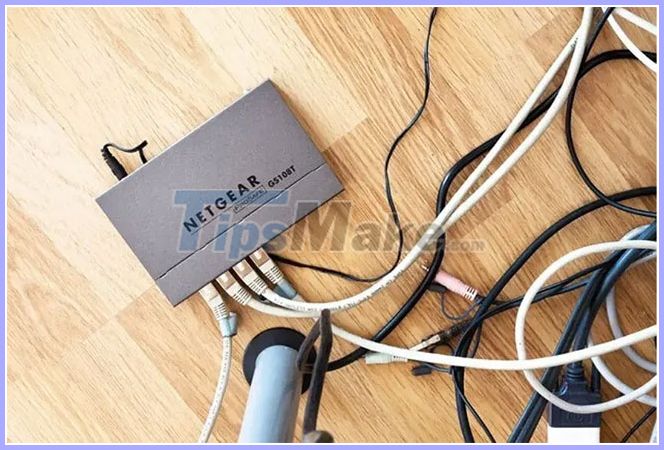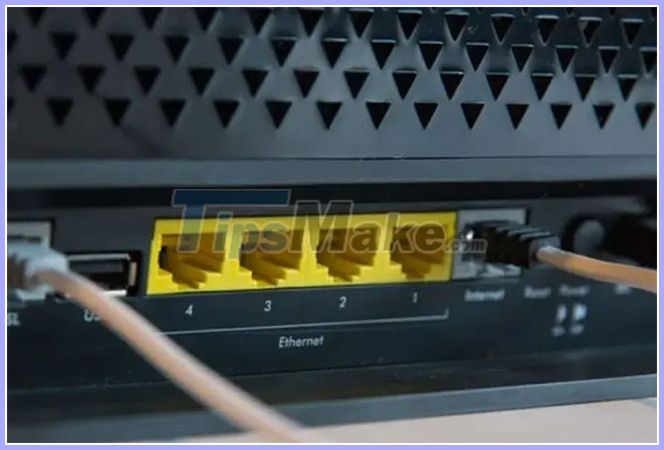How to disable Wi-Fi Protected Setup (WPS) on the router
By default, many routers have Wi-Fi Protected Setup (WPS), which allows you to connect to your device without requiring an SSID and password. However, WPS makes your router vulnerable to a hacker guessing PINs from hackers. Therefore, you may want to turn off WPS in certain cases.
Below, TipsMake.com will discuss how to disable WPS, as well as the benefits and limitations of keeping WPS active.
How to activate / deactivate WPS
There are two ways to manually enable and disable WPS.
 You can enable and disable WPS using the router's web-based configuration interface
You can enable and disable WPS using the router's web-based configuration interface If the router allows you to deactivate WPS, you will be able to do so using the router's web-based configuration interface:
1. To get started, open a browser.
2. Navigate to the router-based configuration interface. You can usually do this by typing the router's IP address into the browser's address bar.
To find the IP address, follow the instructions in this article: How to find the IP Router address on Windows 10.
Each router manufacturer has its own configuration interface, which means that the next part of the WPS shutdown process may vary by router. However, in most cases, you will be able to turn off WPS using the settings in the menu or the Wi-Fi Protected Setup / WPS tab .
For example, on a Belkin router, the WPS section will be listed under the Wireless section of the main interface. Since then, deactivating WPS is also very simple, by switching from 'Enabled' to 'Disabled' in the drop-down menu.
If you're not sure whether your router has WPS enabled, you can tell from this interface.
For some routers, you can also manually enable or disable WPS with a button on the back of the router.
 You can also enable or disable WPS manually with a button on the back of the router
You can also enable or disable WPS manually with a button on the back of the router Some routers do not allow users to deactivate WPS. In cases like these, you won't find a button or settings on the router's configuration interface that can deactivate WPS. If you want to turn off WPS, the only option is to switch to another router.
Benefits and limitations of using WPS
The biggest benefit of having WPS work is the convenience. When WPS is on, you can connect any device to your router without your router's password or ID. This can save you a bit of time when connecting new devices and also allow connecting devices whether you remember the router password or not.
However, WPS also presents a fairly serious security risk that you cannot avoid. When WPS is on, hackers can guess the router's password multiple times until they find the correct password. If you have not taken steps to improve router security, the router may be particularly vulnerable.
When hackers have a password, they will have access to the Internet connection, use it for whatever they want, until you reset the router's password.
If you want to use WPS, you should consider the amount of time saved compared to the potential hassle, if an attack on your router is successful.
When to use Wi-Fi Protected Setup?
The answer is that you should not consider using WPS. WPS presents some pretty serious security risks. In general, turning this setting off is a good idea, unless you really need the convenience it offers.
You should read it
- How to connect a computer to Wi-Fi without a password on Windows 10
- What is Protected View? Turn on and off the Protected View feature in Office 2016
- Should I turn on the WiFi router continuously or not?
- What is WPA2 (WiFi Protected Access 2)?
- How to set up WiFi network to play LAN games
- Instructions on how to use wifi adapter Tenda A
 Top 6 best free wifi generator software 2020
Top 6 best free wifi generator software 2020 Configure TP-Link WR841N as wifi repeater
Configure TP-Link WR841N as wifi repeater How to use a Windows 10 PC as a WiFi extender
How to use a Windows 10 PC as a WiFi extender How to turn a laptop into a wireless repeater
How to turn a laptop into a wireless repeater How to share a VPN via WiFi Hotspot from a laptop
How to share a VPN via WiFi Hotspot from a laptop 5 reasons to set up a guest network on the router
5 reasons to set up a guest network on the router